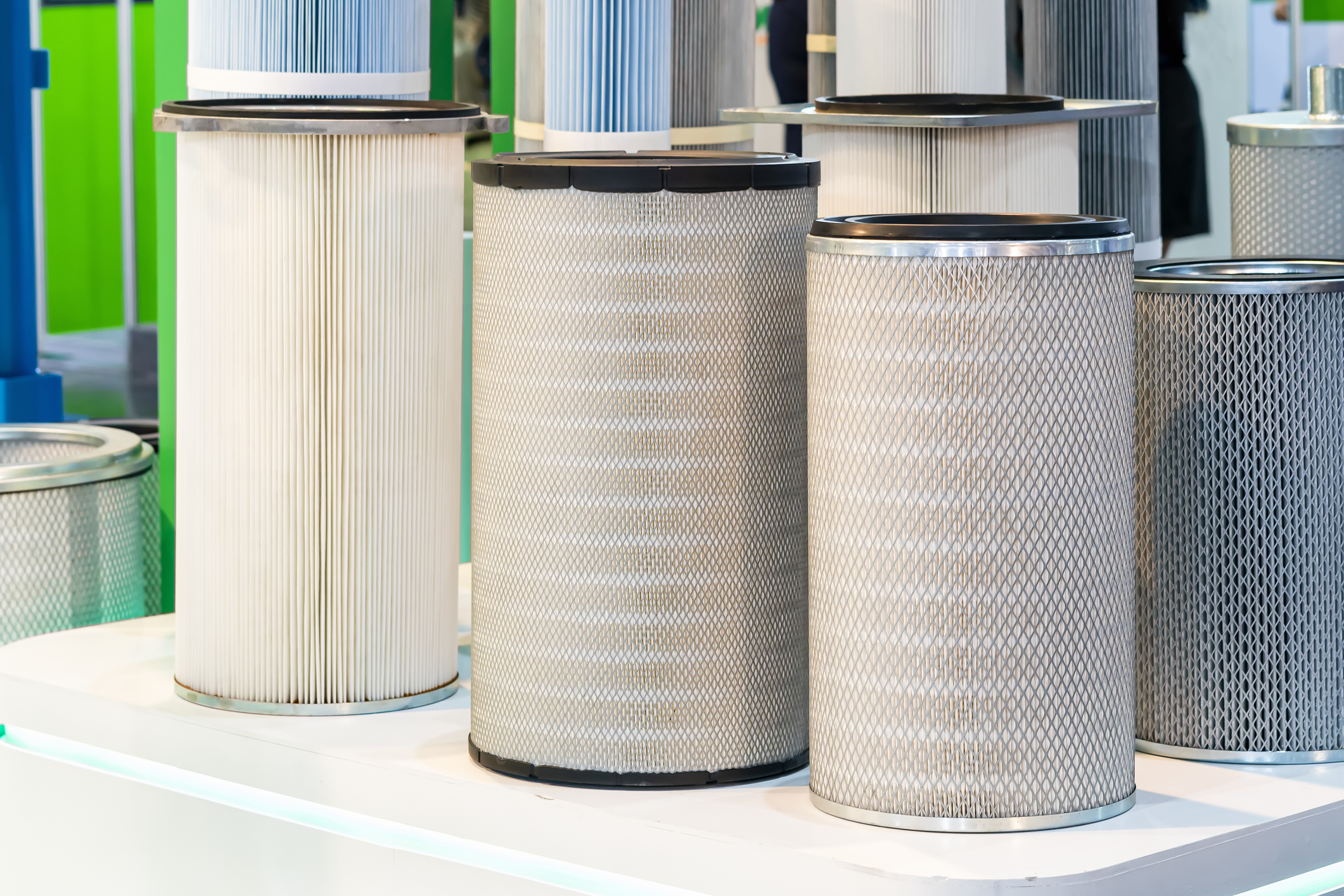

In industrial gas filtration, precise filter sizing ensures optimal performance, longevity, and equipment safety. Two critical factors influencing filter sizing are temperature and pressure. Understanding their impact on gas behavior is essential for selecting appropriate filters, particularly in fuel and seal gas systems applications. This article explores how temperature and pressure affect gas volume and density, and how to account for those variables in filter sizing calculations.
Filter sizing in gas filtration refers to determining the correct filter dimensions, media type, and surface area to accommodate specific flow rates and contaminant loads under defined operating conditions. The objective is to ensure consistent throughput without causing unacceptable pressure drop levels while effectively capturing particulate or aerosol contaminants.
Proper sizing is critical in fuel gas conditioning units, seal gas supply to centrifugal compressors, and turbine inlet systems. It is also important in other high-performance equipment. Key goals in filter sizing include:
In addition, each application has unique challenges. While fuel gas filters must handle wide temperature ranges and varying loads, seal gas filters demand low, stable flow to maintain mechanical seal performance.
Effective sizing practices combine system data, operating conditions, and validated manufacturer specifications. Combining these ensures the selected filter element is optimized for the application. Hence, avoiding improper sizing that leads to operational inefficiencies.
To size gas filters accurately, it’s critical to understand how temperature and pressure influence gas properties. The Ideal Gas Law (PV=nRT) describes the relationship among pressure (P), volume (V), and temperature (T) in a closed system. As temperature increases, gas density decreases, making the gas more compressible. Conversely, as pressure increases, gas density rises.
These changes affect flow behavior: high-temperature gases occupy more volume and move faster, while high-pressure gases are denser and require more energy to flow through a filter medium. For example:
Understanding this behavior is essential because filter performance is rated at standard conditions (SCFM), but actual conditions may differ significantly. Engineers must convert to actual cubic feet per minute (ACFM) to ensure proper sizing under real-world conditions.
Filter sizing for gas applications must be based on Actual Cubic Feet per Minute (ACFM) rather than Standard Cubic Feet per Minute (SCFM). ACFM accounts for the system’s actual pressure and temperature, providing a more accurate representation of the gas volume passing through the filter.
The conversion formula is:
ACFM = SCFM × (Pstd / Pactual) × (Tactual / Tstd)
Where:
Incorrect assumptions in this conversion can lead to major sizing errors. Undersized filters may clog prematurely or promote excessive differential pressure, causing operational inefficiencies and possible equipment damage. Oversized filters may result in unnecessary cost and installation complexity.
Seal gas filtration especially demands accuracy. These systems rely on stable flow to protect mechanical seals from contamination. An incorrect filter size can compromise seal integrity, leading to leaks or failures. Precise ACFM-based sizing ensures optimal filter loading, media lifespan, and system protection.
Differential pressure (∆P) in gas filtration reflects the resistance a gas experiences as it moves through the filter. A well-designed filter minimizes ∆P while maintaining high filtration efficiency. However, ∆P is directly influenced by gas density, flow rate, and the physical properties of the filter element.
Key factors affecting ∆P include:
In fuel gas applications, high ∆P can reduce available energy delivery to turbines or burners. Resulting in combustion instability, efficiency losses, or even shutdowns. For seal gas systems, maintaining a low and stable ∆P is essential to avoid disturbing the pressure balance that protects sensitive mechanical seals.
Engineers must select filters based on accurate ACFM calculations, ensuring the design accommodates expected operating conditions. This includes verifying that the filter can perform without exceeding acceptable ∆P thresholds over its service life.
To size a gas filter properly, real-world operating conditions must be incorporated. Here’s an example:
Given:
ACFM = 500 × (14.7 / 464.7) × (610 / 528) = 18.3 ACFM
Using this corrected ACFM, you can select a filter with the appropriate media surface area and pressure rating. Manufacturer sizing charts or software are useful tools for matching filters to specific flow conditions.
ChangeOVR® replacement filters are engineered to meet or exceed OEM specifications, offering reliable performance across a wide range of pressures and temperatures. Proper ACFM-based sizing using corrected data ensures filter reliability and longevity in even the most demanding conditions.
Here are the most common applications for fuel gas and seal gas filters.
Fuel gas filters play a crucial role in protecting downstream equipment such as gas turbines, internal combustion engines, and industrial burners from particulate contamination, aerosols, and liquid hydrocarbons. Their proper sizing and selection are vital to maintain combustion efficiency, reduce emissions, and prevent damage to critical components.
Seal gas filters are critical components in compressor and turbine seal gas systems, where they protect mechanical seals from particulate ingress and liquid contamination. Mechanical seals rely on a continuous flow of clean, dry gas to maintain a stable barrier between high-pressure process gas and the atmosphere.
When replacing gas filter elements, it's critical to match both the physical and performance specifications of the original equipment. ChangeOVR® offers replacement filters that are designed not just for dimensional compatibility, but for full operational performance under actual pressure and temperature conditions. Their robust media and construction maintain filtration efficiency and structural integrity despite thermal expansion, high-pressure stresses, and variable gas densities.
Benefits of ChangeOVR® replacement filters:
For technical guidance or to browse our filter catalog, visit the ChangeOVR® Product Catalog.